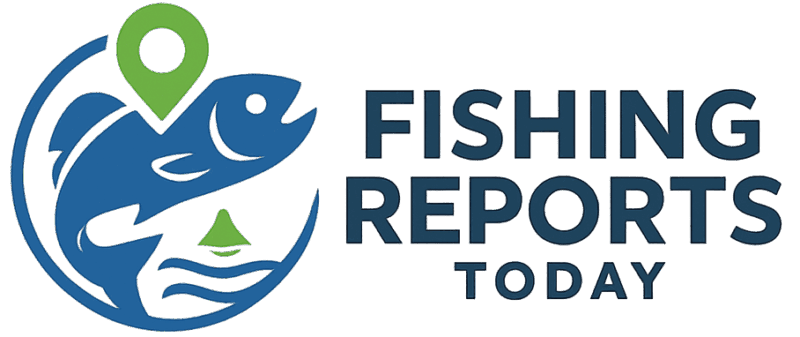About Fishing Reports Today
Our Mission
Fishing Reports Today was founded with a clear purpose: to transform complex environmental data into practical fishing intelligence. Covering more than 500 locations across the United States, our system helps anglers decide when to go, where to fish, and how to adapt techniques to real-time conditions. Each forecast merges scientific precision, on-the-water expertise, and local knowledge—empowering anglers to make smarter, safer, and more successful fishing decisions.
Where Our Data Comes From
All forecasts are powered by the Open-Meteo API, which supplies integrated atmospheric and oceanographic data refreshed every six hours. Through this feed we process local wind, tide, wave height, direction, period, sea-surface temperature, and UV exposure. These measurements are validated against NOAA reference stations—including CO-OPS tide gauges and NDBC buoys—and cross-checked with USGS river and lake monitoring networks to ensure consistency and accuracy.
Beyond sensors, our analysis includes verified community signals. We continuously monitor publicly available fishing reports from forums, blogs, regional media, and open social channels. Natural-language analysis identifies species, bait types, and time patterns to highlight genuine fishing activity. All such data are anonymized and used strictly for behavioral trend validation.
Regulatory content on the site—bag limits, size restrictions, and closed seasons—is drawn exclusively from official federal and state fisheries agencies, including NOAA Fisheries and local wildlife departments. Fishing-spot geolocations come from public angler repositories and open international databases, cross-referenced with hydrographic maps and access records. The result is a uniquely comprehensive picture of every fishing area we cover.
The Fishing Score Algorithm
The Fishing Score is our proprietary 0–100% index that rates how favorable current fishing conditions are at any given moment. It acts like a “fishing traffic light”: green for excellent, yellow for fair to good, and red for difficult conditions. The algorithm is grounded in bibliographic research from marine biology, oceanography, and ichthyology, supported by data from professional charter logs, tournament statistics, and decades of hands-on experience from expert anglers.
In essence, the model weighs four major variables—tide dynamics, wave energy, wind behavior, and time of day—because these factors most directly influence fish feeding activity. Tide movement carries the highest weight, as moving water stimulates feeding; waves determine access and stir up food along structure; wind governs drift, presentation, and surface texture; and daylight cycles open or close feeding windows around dawn and dusk.
The weighting structure (approximately 35% tide, 25% waves, 20% wind, 20% time) is based on empirical field studies and refined through continuous calibration. The algorithm dynamically adjusts for wave-period organization, wind intensity, and light levels. Calm conditions can make fish cautious, while moderate chop provides concealment. Slack tide often quiets the bite, whereas a strong incoming tide reactivates it. Each input is benchmarked against historical success data, normalized for seasonal context, and recalculated every six hours to reflect the latest conditions.
Practically speaking, a strong incoming tide combined with two-foot organized waves, an eight-mile-per-hour breeze, and early-morning light often yields a score above 90%. Conversely, slack water with heavy surf and crosswinds at midday lowers it considerably. The Fishing Score isn’t a guarantee of success—it’s a data-driven guide that converts environmental complexity into clear, actionable strategy: when to go, what to target, and how to adapt.
Species Guides and Expertise
Our species and regional fishing guides draw upon an extensive bibliographic foundation and the experience of expert anglers, local guides, and gear specialists. Each guide combines academic knowledge of fish behavior with firsthand field experience and product insight from tackle manufacturers. The goal is to connect environmental analysis to technique—explaining not only what the data means, but how to apply it effectively on the water.
Coverage
Fishing Reports Today spans the Atlantic, Pacific, and Gulf coasts, as well as major inland lakes, reservoirs, and river systems across the United States. Every regional page integrates localized weather, wave and tide data, government-verified regulations, and aggregated angler activity. All forecasts refresh automatically every six hours to provide the most current, trustworthy view of conditions available to recreational anglers.
Transparency and Reliability
Transparency is central to our work. Every dataset used is public, traceable, and cited. Automated components are clearly identified, and all regulatory data is reviewed monthly for accuracy. We encourage every reader to verify local fishing laws before heading out—ethical, sustainable angling begins with informed preparation.
Contact
If you have questions about our methodology, data sources, or the Fishing Score algorithm, please visit our contact page.
Authored by the FRT Marine Analysis Team — integrating Open-Meteo, NOAA, USGS, official fisheries data, bibliographic sources, and verified public angler reports to deliver data-driven, expert-validated fishing forecasts.
